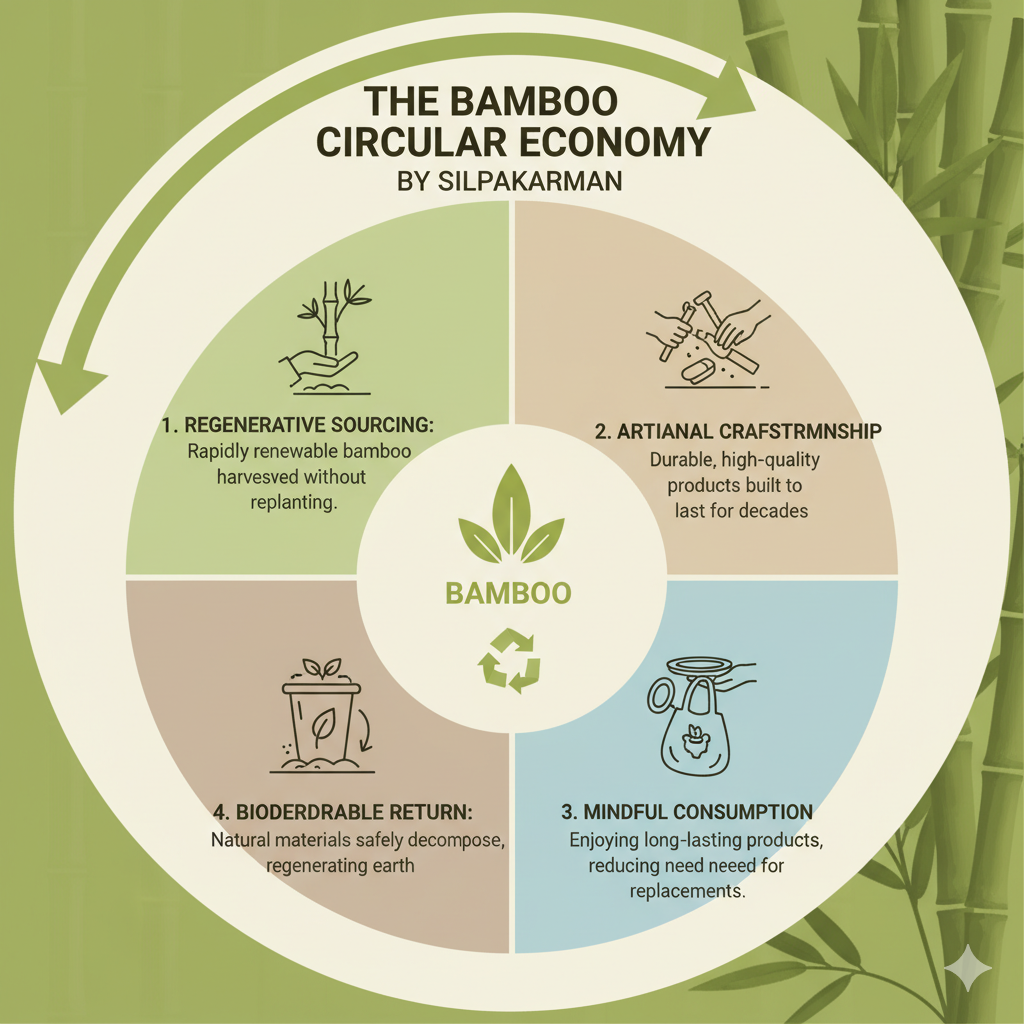
Beyond 'Take-Make-Dispose': How Bamboo Crafts Power the Circular Economy
Compartir
The way we consume has a huge impact on our planet. For decades, the dominant model has been a Linear Economy: we take raw materials, make products, and dispose of them after use. This creates massive waste and resource depletion.
At Silpakarman, we are committed to the Circular Economy, a system designed to eliminate waste and keep resources in use for as long as possible. We focus on three core principles: Design out waste, keep products in use, and regenerate natural systems.
Bamboo: Nature's Circular Superstar
Our choice of bamboo isn't just about aesthetics—it's the foundation of our circular commitment:
- Regenerative Sourcing: Bamboo is the fastest-growing plant on Earth, and crucially, it regenerates from its existing root system after harvest. This means we don't have to replant, allowing the soil to remain undisturbed and promoting a healthy ecosystem.
- Crafted for Durability: Our products are meticulously handcrafted by skilled artisans. Unlike cheap, mass-produced items designed to break, our bamboo products are built to last. By creating items of exceptional quality, we maximize their lifespan and reduce the need for premature replacement.
- A True End-of-Life: Since bamboo is a natural, organic material, our products are inherently biodegradable. When a bamboo item finally reaches its end of life (which, with proper care, is decades away!), it can naturally return to the earth, completing the circle.
Your Role in the Circle
Choosing a Silpakarman product is an active choice to participate in the circular economy. You're supporting a model that values:
- Longevity: Choosing a product that will last.
- Minimal Waste: Supporting regenerative sourcing and natural materials.
- Artisan Value: Honoring the craft that reduces processing waste and pollution.
By embracing durability and ensuring our materials are non-toxic and biodegradable, we make the "end" of our product's life a beautiful new beginning for the planet.
